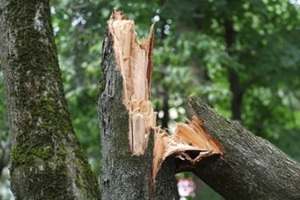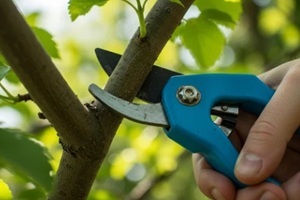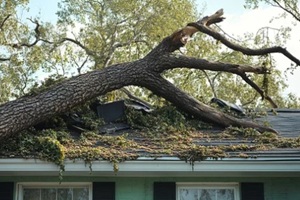
Summer storms near Alexandria, VA and surrounding Northern Virginia neighborhoods, are harsh reminders that landscape and property damage can happen at any time. In any Northern VA region, the mature trees lining properties and street blocks are susceptible to high wind and rain.
These elements put the trees under incredible stress, threatening to make one of the property’s most beautiful assets a dangerous and costly liability. The level of danger associated with these risks requires strategic planning for storm season.
This article provides actionable steps for minimizing storm-related tree damage in Alexandria and other parts of Virginia. Professional preparation can make sure that trees remain an asset on your property, rather than a safety hazard.
1. Assess the Vulnerability of Each Tree
When making DIY preparations for storm season, it is recommended that property owners follow the same steps as the professionals. This begins with a thorough assessment of every tree to identify those at risk and determine the best course of action per tree. Depending on the type of health issue, different precautionary measures may be necessary.
The mistake that many homeowners make in this process is to assume that a tree that looks healthy is not at risk. Certified arborists look for more than just green leaves and attractive bark to assess the tree’s risk level. They also consider:
- Cracks or splits in the main trunk or limbs
- Co-dominant trunks or stems, or other weak attachments
- Signs of a leaning canopy or unbalanced growth
- Foreign growths, especially at the base, such as well-known fungal parasites
- Signs of a pest infestation
By identifying any tree risks early, it is more likely that they can be safely addressed with pruning. However, even if they look healthy from the outside, structural or health weaknesses that make trees vulnerable to falling over or losing limbs during storm season may require full removal.
2. Prune Trees Regularly

Regular pruning can help trees maintain structural integrity during storm season by reducing their wind resistance, removing limbs before they fall, and encouraging a more even growing structure. Pruning should be done proactively, starting when the tree is young; but even mature trees can benefit from strategic pruning.
A professional arborist will know how to treat each tree individually by observing these factors:
- Overly dense canopies that lean, increasing the tree’s wind drag
- Deadwood, often spotted by limbs that appear hanging or split
- Overextended branches over driveways, roofs, powerlines, and other structures
- Trees lacking sufficient clearance between their canopies and other plants or structures
By spotting these issues, property owners can start a proactive pruning schedule with an expert tree service to get their overgrowth under control before storm season. Pruning is a job best accomplished by professional arborists with experience treating mature trees.
3. Pay Attention to the Roots
Root assessments are often an overlooked part of storm season preparation. Healthy roots keep the tree stable during harsh wind and rain, while weakened roots are more likely to uproot and cause the tree to fall.
Unfortunately, root systems can be difficult to inspect without help from a professional, but these tips are a good place to start:
- Exposed roots tend to indicate an issue with the structure
- Heaving soil is a sign that the roots could be weakened, and the tree is already becoming unstable
- Waterlogged soil can indicate a lack of drainage around the root zone
Fixing these issues could be as simple as moving in new soil and mulching the base around the tree to reduce compaction and strengthen the root system. However, to prevent a tree from falling, professional arborists can identify at-risk trees and create more complex support systems such as anchors. This can be a game changer if accomplished while the trees are still young.
Partner with Professional Arborists in Northern Virginia to Prepare Your Trees for Storm Season

Storm season creates real risks for property owners in Northern Virginia. The high winds and heavy rain with those storms can damage even healthy trees, turning limbs, trunks, or root systems into hazards that threaten homes, power lines, and people. In many cases, tree removal becomes necessary to prevent serious damage before the next storm hits.
At RTEC Treecare, our certified arborists help Virginia homeowners prepare their landscapes through proactive tree care, not just emergency response. We start with a comprehensive inspection that evaluates tree health, structure, age, and proximity to buildings or utilities.
Attempting DIY tree maintenance near your home can be dangerous and costly, especially without proper tools or experience. Let our team help you protect your property before the next storm arrives.
Contact our team today to learn how we help homeowners protect their landscapes, proactively avoid the need for tree removals, and keep their properties and families safe during the Virginia storm season.


